
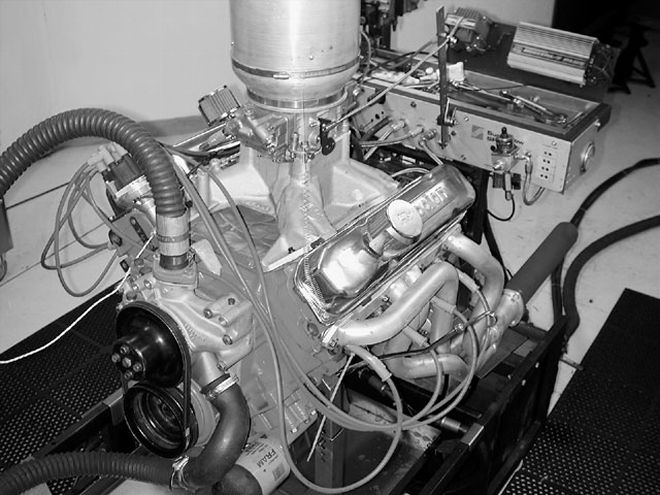
Ok, we've done header tests in the past, comparing various styles and sizes on moderate to high-powered street-style mills. In the case of the big-block Mopar, the default favorite tube size has long been a 1 7/8-inch primary pipe diameter with a 3-inch collector. This size has become the most popular choice in a high-powered street application for one reason-it has been found to work. Moving up the power ladder, say to the level of a well executed "bracket" or sportsman racing engine, or the upper realm of high-performance "street" engines, we had to wonder if there is just a little more power to be had. Would such an engine benefit by upping the ante on header tube diameter? After all, what works best on an engine in the 450-500hp range may leave some power on the table when dealing with engines in the 600-650hp class.
There are theoretical formulas dealing with the subject of pipe diameter as it relates to exhaust port flow. Use the equation (square root (cfm x .0159)), and the numbers often come in pretty close to what experience has shown necessary. Consider exhaust flow in the area of 200 cfm at 28 inches typical for a well-ported production cylinder head. Working the math shows a 1 7/8-inch pipe diameter is near optimal. Upping the exhaust-port flow into the 250-cfm range, the formula predicts a larger pipe diameter is optimal, calling for something in the range of 2 through 2 1/8 inch. just as you would expect, a higher flowing exhaust port favors a larger primary pipe diameter.
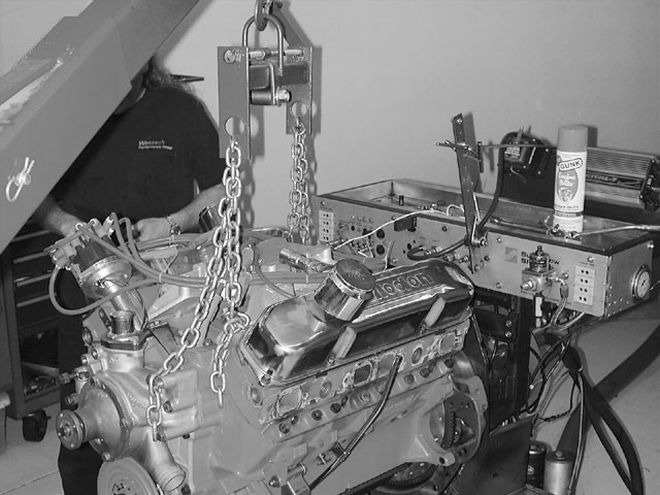
While looking at exhaust flow may help to provide a ballpark estimate of required pipe diameter, there are other significant factors that can affect the optimal tube diameter. Using port flow as the basis for sizing does have its drawbacks. Ultimately, the volume of exhaust flow will not necessarily be determined by the peak flow rate of the port. Other factors can make a critical difference in the required header tube diameter, most of which are related to the flow and mechanical efficiencies of the engine combination. Other formulas of varying complexity have been worked out to provide a basis for making a calculation of optimal pipe diameter. With these formulas, the primary variable is changed from the exhaust port flow (as used in the above example) to include factors, such as peak torque rpm, peak horsepower output, cubic displacement, and/or cam timing.
Even at that, there is a great deal of variability in what works best in a given combination. While formulas can be useful in making predictions, no formula will take into account the specifics of a header's designed layout. Significant factors here include the layout of the tubes, the radius and number of bends, collector design and size, as well as the departure radius and direction from the port exit. The only way to know for sure which headers will work best, is to try them and see. We gathered a handful of popular headers aiming to cover the most commonly used pipe diameters on big-block Mopar engines. The range included header primary pipe diameters of 1 3/4, 1 7/8, 2, and 2-2 1/8-inch step headers. Since our primary aim was to see how a higher horsepower engine would respond to the larger primary pipe diameter of the bigger headers, we dusted off our "Iron Headed Air Hammer" test engine (see Sidebar: the Mill), an engine capable of well over 600 hp.
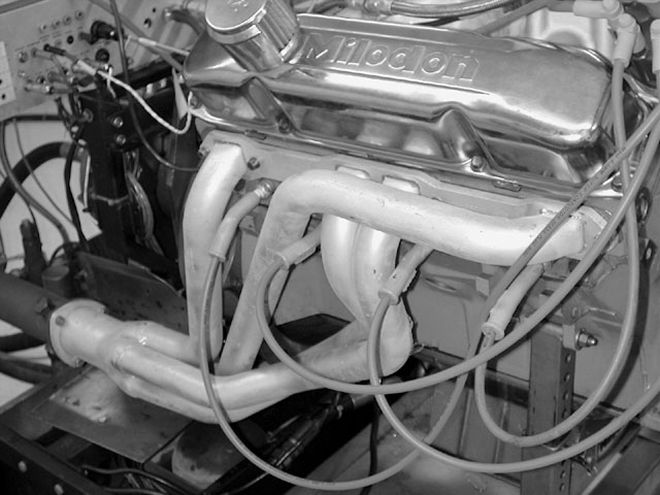
We wanted to look at peak numbers, but were just as interested in how these varied header designs affected the entire curve. To summarize the results, we calculated the average outputs over the rpm range tested, from 3,000-6,600 rpm. While the overall averages give an indication of the area under the entire power curve, we also broke down the results to include average torque production above and below 5,000 rpm. Header changes will sometimes take power away at below-peak-torque rpm, but show added power at above-peak-torque rpm. We chose 5,000 rpm because it was roughly the rpm point at which this engine peaked in torque output. In a pure race application, output at peak-torque rpm and above is the most relevant range, since this is basically the operating range the engine will see on the track. In a dual-purpose application, torque output lower down becomes much more of a consideration. Here's what we found.
The Mill:Our Iron Headed Air Hammer
The mule for our test wasn't your ordinary street mill, but rather a stout 440 combo. The short-block features a reground stock-stroke forged-crank, swinging Eagle H-beam rods, and 12.5:1 Arias piston with Total Seal Slant Gap Gapless rings. With a stock 3.75-inch stroke and a .060-inch overbore, the final displacement is 452 ci. The piston domes were massaged to smooth the sharp edges, and the spark plug reliefs were radiused, which helps flame travel with high-domed pistons and the big wedge's distant plug position. The final compression ratio calculated to 12.66:1 with a -.005-inch piston deck clearance, and Milodon's copper .040-inch gasket. Milodon studs were used to secure the crank and heads, along with their deep sump pan, tray, oil pump, 1/2-inch pickup tube, and gear drive. The block's oil feed passages to the oil pump were massaged with a carbide bit.
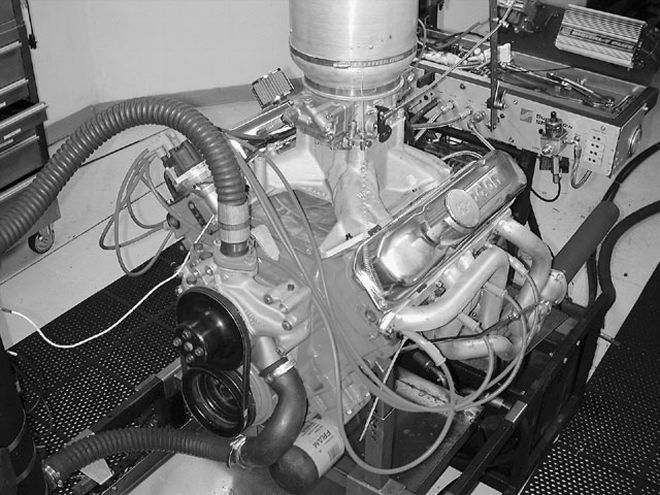
The heads are production 915 castings, selected for their closed quench chamber configuration. The ports have been seriously reworked with a max-effort (no welding or epoxy) porting job, and fitted with custom Manley 2.25-inch intake valves and 1.81-inch exhaust valves. To minimize shrouding with the large valves, the chamber was plunge cut adjacent to the valve, well beyond the sealing surface of a stock gasket. Milodon copper gaskets were modified to match the chamber, and the bores were notched for a smooth transition from the chamber to the cylinder. Flow was improved to the tune of 25 percent more under the entire flow curve (as opposed to just an increase in peak flow) on both the intakes and exhaust, with peak flow figures up by 34 percent. Working the valves is a full Competition Cams cam-and-valvetrain package, including a custom Comp roller camshaft, with their NC-Series 4149 intake lobe, and High Tech .420-inch exhaust lobe. It works out to 260/258 at .050, and over .650-inch lift after lash with Comp's 1.6:1 aluminum roller rockers.
To handle the induction duties we used an 1150 annular discharge-booster Holley Dominator 4500 Series carburetor, and it performed flawlessly mounted to a ported Weiand Team G intake manifold. Getting over 630 hp from a single four-barrel, all iron 440 without any juice, spray, or squeeze just doesn't happen by accident. What it takes is a working balance of flow, valve action, and compression.
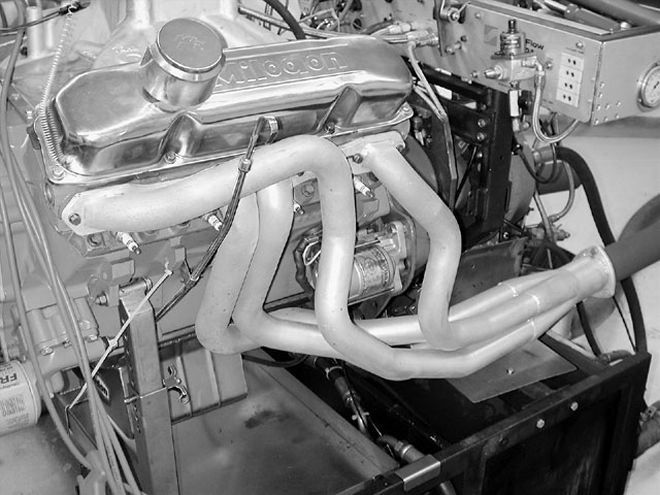
Hedman Hedder's
Aimed primarily at moderate street engines, the 1 3/4-inch Hedman headers were definitely a misapplication on this high-compression, substantially cammed 440. We were interested in seeing how our engine would react to running such a header, and the effects on output. We found the results surprising. At the low end of the pull, the small-tube headers were down considerably in torque, in fact, a staggering 70 lb-ft., from 3,000-3,400 rpm. At 3,400 rpm, they began to recover, and between 4,000-4,500 rpm, they provided the highest torque output of all the headers tested by a slight margin. As expected, above 5,000 rpm, the output dropped rapidly compared to the larger-tube headers. Conventional wisdom predicts that a small-tube header will provide the best low-end torque. In this case, the low-end torque was crippled.
Our test engine has a fairly aggressive solid roller camshaft, on a fairly tight lobe separation angle. That means lots of overlap. The ports had been substantially enlarged, and the induction was comprised of a large plenum single-plane intake manifold, topped with an 1150 Holley Dominator carb. These two factors conspire to make the exhaust system highly communicative with the induction tract, particularly at lower rpm at low induction gas speeds. We suspect that the small header was allowing significant reversion to occur until the dynamic velocity of the induction system reached a critical point, allowing the airflow to "clean-up". Looking at the dyno readout of air consumption, airflow through the engine was down with the decline of output at the low rpm range. Simply put, the header was terribly wrong for this combination at low rpm. We have run this header in tests on engines with outputs more suited to its intended application, in the 400-475hp range and found the results very satisfactory.
The PipeHedman Hedders' Elite 1 3/4 inchTypical applicationStreet perfomancePrimary diameter1 3/4 inchCollector diameter3 inchPrimary lengthunequal lengthPeak hp603 hp @ 6,500 rpmPeak torque563.9 lb-ft @ 4,800 rpmAverage hp 3,000-6,{{{600}}} rpm475 hpAverage torque 3,000-6,600 rpm515.2 lb-ftAverage torque 3,000-5,000 rpm508 lb-ftAverage torque 5,000-6,600 rpm526.9 lb-ft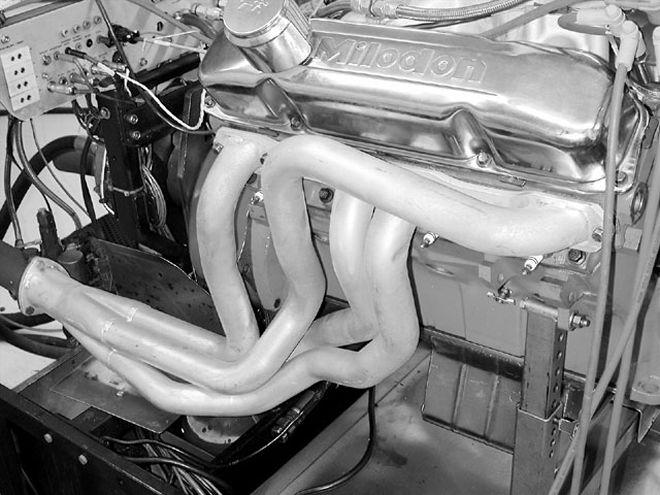
Hedman Hedder's
A proven favorite for Mopar fans, the 1 7/8-inch header typically works very well on a wide range of engine combos, in applications ranging from performance street to fairly serious. With the 1 7/8-inch headers bolted up, the hole at the bottom of the power curve went away. In fact, the 1 7/8-inch tubes had the best output at the bottom of our test range, and held a minor torque advantage over the larger tubes up 5,000 rpm. At about 5,600 rpm, the added flow of the larger tubes made its presence known, but the 1 7/8-inch pipes did carry a significant advantage in this higher range when compared to the 1 3/4-inch tubes. The averages moved up substantially compared to the smaller pipes, indicating the 1 7/8-inch pipes are unquestionably the better choice when dealing in the higher output levels.
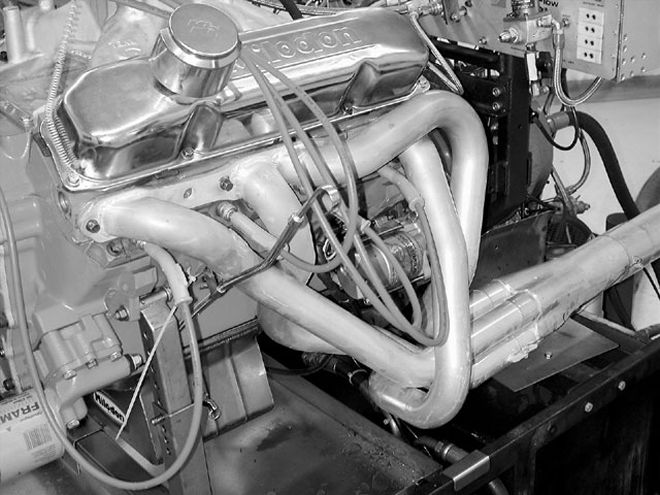
When the 1 7/8-inch headers were compared to the larger tubes tested later, the overall average output was about the same. however, these headers clearly favored output below peak torque rpm, while the big pipes proved superior higher up. For general purpose, high-performance use in the 475-575hp range, the 1 7/8-inch header is the size to get.
The Pipestti 1 7/8 inchTypical applicationDual purpose/RacePrimary diameter1 7/8 inchCollector diameter3 inchPrimary lengthunequal lengthPeak hp616 hp @ 6,500 rpmPeak torque570.5 lb-ft @ 4,800 rpmAverage hp 3,000-6,{{{600}}} rpm488 hpAverage torque 3,000-6,600 rpm533.1 lb-ftAverage torque 3,000-5,000 rpm532.2 lb-ftAverage torque 5,000-6,600 rpm536 lb-ft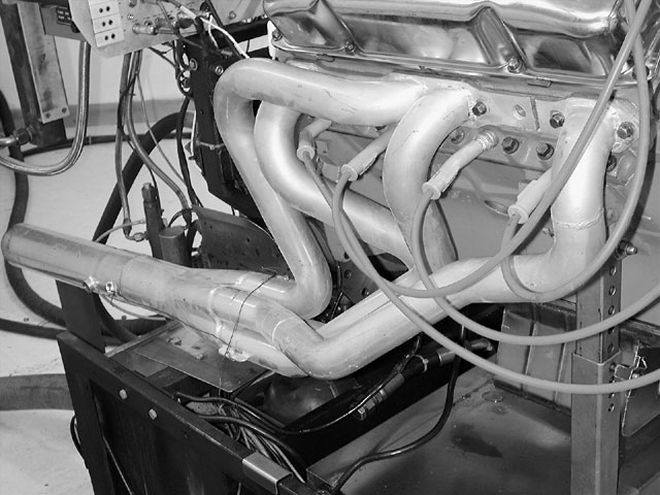
Hooker 2-Inch Super Competition
Moving to the larger 2-inch Hooker Super Comps, the engine responded with a significant increase in top-end horsepower, upping the output by 18 hp. Looking at the averages, however, the gain came at a price. The averages over our entire test range were within 1 hp and 1lb-ft of the 1 7/8-inch header, indicating that as far as overall output over the engine's test range was concerned, it was almost a dead heat.
The difference between the 1 7/8 and 2-inch headers was simply where the power comes in. The torque averages above and below 5,000 rpm (approximately peak torque rpm) shows that the larger tubes added to output up top, while subtracting a similar amount down low. Essentially, the larger tubes tilted the torque curve around peak torque, with more up high, and less down low, for nearly identical averages. Interestingly, peak torque rpm moved up 500 rpm, a significant amount. The larger 3 1/2-inch collector diameter likely had a large part to play in that change.
The PipesHooker 2-inch Super CompetionTypical applicationDual purpose/RacePrimary diameter2 inchCollector diameter3.5 inchPrimary length32 inchPeak hp634 hp @ 6,400 rpmPeak torque568.4 lb-ft @ 5,{{{300}}} rpmAverage hp 3,000-6,600 rpm489 hpAverage torque 3,000-6,600 rpm531.4 lb-ftAverage torque 3,000-5,000 rpm521.7 lb-ftAverage torque 5,000-6,600 rpm545.4 lb-ft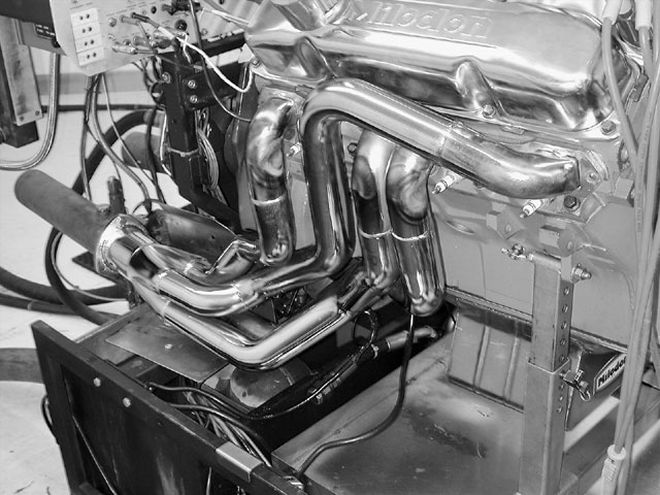
Hooker 2-Inch Super Competition
The tti step header is different compared to all of the other headers tested. The tube diameter "steps", or increases in size, at about 5.5 inches from the header flange. The increase in diameter down the pipe allows for gas expansion, and provides a benefit in reducing reversion tendencies as compared to a straight pipe of a larger diameter pipe, especially in the critical area of the exhaust port exit. The upshot is the ability to run a large pipe diameter while minimizing the potential for a decrease in torque lower in the rpm range, thus providing a broader torque range.
Step headers have become popular in all-out drag racing classes, and they are proven to work. Theories abound about the mechanics of why this is true, including the notion that the step presents a cross-sectional area change, sufficient to reflect a low-pressure wave to improving the scavenging effect. Considering the tuned length of the short section of pipe to the first step, this seems unlikely. However, one thing that we have found conclusively, is that a larger pipe diameter can be employed while minimizing the torque penalty lower in the operating range.
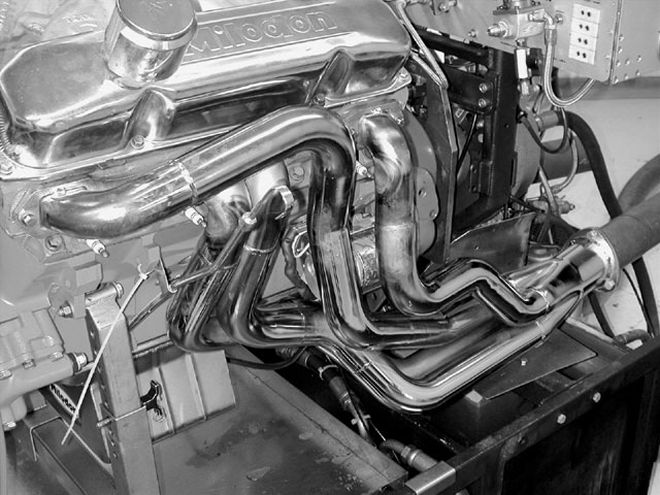
The tti step header, at 2 1/8 inches for the majority of the primary pipe length is, by most formulas, on the large side for an engine at the performance level of our test 440. Had we been testing straight 2 1/8-inch headers, we would fully expect to see a drop in torque production below-peak-torque rpm, and very little, if any, gain higher up as compared to a 2-inch tube. With the stepped design, we actually posted a slightly-higher average torque number than with the 2-inch headers, and the highest peak horsepower of any of the headers tested. The edge was slight, but the numbers were up in every category, though the power curves followed those of the 2-inch header very closely. It is worth noting that the tti stepped headers we tried were nickel-chrome-plated steel. All of the other headers in our test were metallic ceramic coated, a coating which is claimed to provide a power enhancement, although we have never verified this directly or compared to chrome headers.
This tti seems to be well suited for high-output applications, and we have used them in big-block Mopars to well over 750 hp. The step makes them a flexible design, allowing the tti "steps" to be used successfully on engines with considerably less horsepower than this, while providing enough header capacity for the combination to grow as the engine is enhanced. With an engine combination like our 630hp test mule, we could use the bigger header now, and still be satisfied the header will be adequate if we moved up to serious race heads and moved the peak power upwards of 100 hp.
The Pipetti 2-2 1/8 inch Step HeaderTypical applicationHigh output street/RacePrimary diameter2 inch, stepping up to 2 1/8 at 5.5-inches from flangeCollector diameter3 1/2 inchPrimary lengthunequal lengthPeak hp636 hp @ 6,400 rpmPeak torque567.7 lb-ft @ 4,800 rpmAverage hp 3,000-6,{{{600}}} rpm490 hpAverage torque 3,000-6,600 rpm532.7 lb-ftAverage torque 3,000-5,000 rpm523.4 lb-ftAverage torque 5,000-6,600 rpm548.8 lb-ft